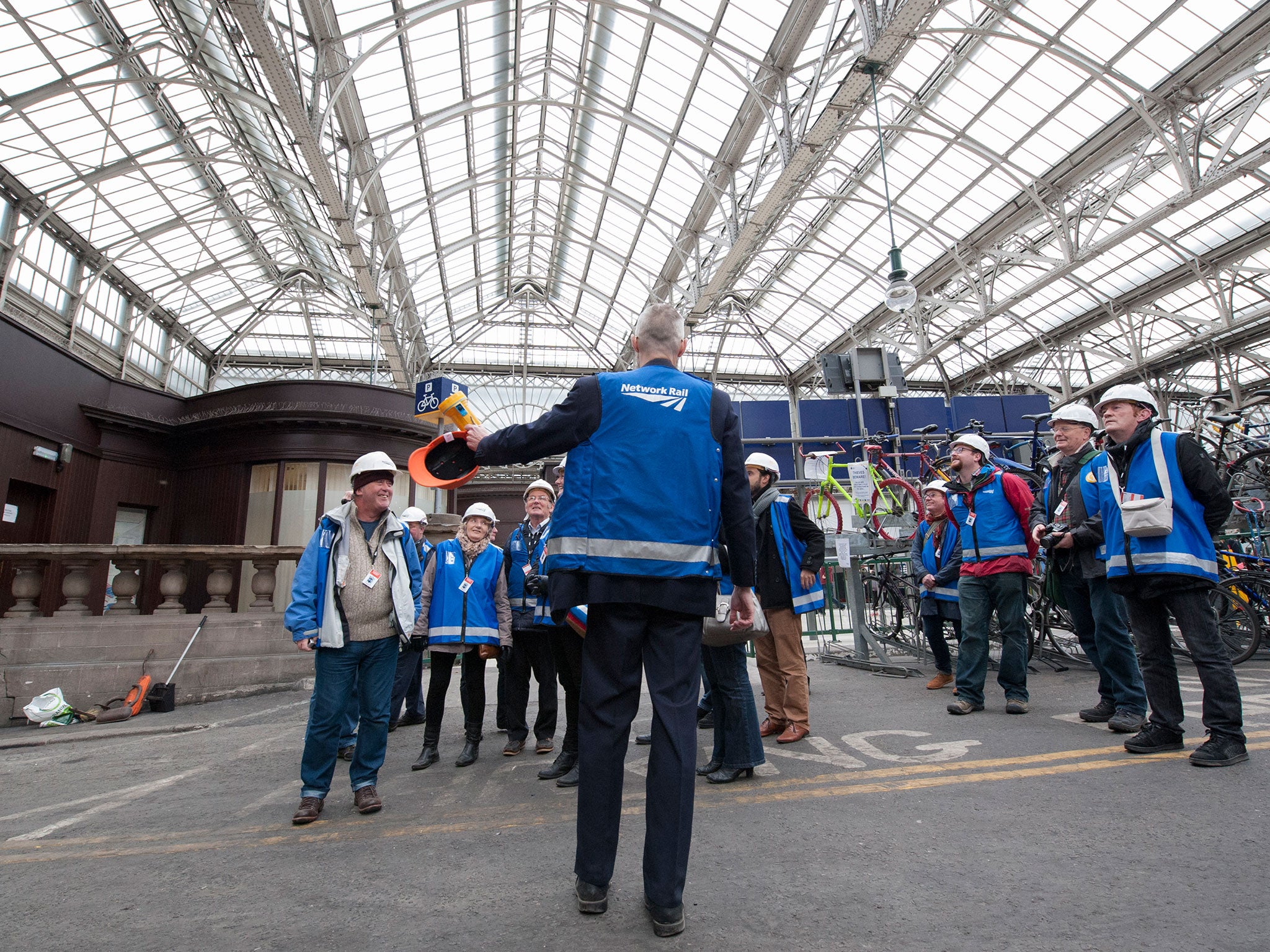Train station tourism takes off at Glasgow Central
Visitors are increasingly being invited to explore hidden nooks and crannies of historic rail hubs

Your support helps us to tell the story
From reproductive rights to climate change to Big Tech, The Independent is on the ground when the story is developing. Whether it's investigating the financials of Elon Musk's pro-Trump PAC or producing our latest documentary, 'The A Word', which shines a light on the American women fighting for reproductive rights, we know how important it is to parse out the facts from the messaging.
At such a critical moment in US history, we need reporters on the ground. Your donation allows us to keep sending journalists to speak to both sides of the story.
The Independent is trusted by Americans across the entire political spectrum. And unlike many other quality news outlets, we choose not to lock Americans out of our reporting and analysis with paywalls. We believe quality journalism should be available to everyone, paid for by those who can afford it.
Your support makes all the difference.Most travellers passing through Glasgow Central train station over the weekend probably did not notice the queues of people slowly picking their way across the vast expanse of the terminus’s glass roof high above them.
Clad in hard hats, gloves and reflective blue tabards, those who did look up might have surmised that the groups were Network Rail workers, perhaps on their way to mend one of the roof’s 48,000 panes of glass.
In fact, they were members of the public who had each paid £10 for the first behind-the-scenes tours of the historic 1879 station – an initiative that points to the rising popularity of train-station tourism in Britain.
From Platform 9¾ at King’s Cross in London, where every year 180,000 Harry Potter fanatics queue to have their picture taken with half a luggage trolley disappearing into a wall to emulate J K Rowling’s boy wizard, to Carnforth station in Lancashire, where tourists can take tea in the same room where David Lean’s romantic classic Brief Encounter was filmed, the UK’s historic rail stations are increasingly attracting visitors who have no intention of boarding a train. The Independent was among the first group of visitors to take part in the Glasgow Central Experience, billed as a “once in a lifetime opportunity” to explore the hidden nooks and crannies of one of Britain’s busiest railway stations.
Starting under the famous clock – one of Glasgow’s most common meeting places – the 90-minute tour descends underground to the eerie site of a forgotten Victorian village, taking in subterranean rooms used as a mortuary during the First World War as well as an old steam engine boiler house where a man strangled his wife for insurance money in the 1930s.
Due to the mildly dangerous nature of exploring a working railway station, Network Rail asks those who participate to be over 16, physically fit – and sober. After being led through a maze of hidden passages with a habit of suddenly emerging on to public platforms to the confusion of passers-by, visitors scale a long flight of stairs and gaze down on the River Clyde from Glasgow Central’s enormous roof, which with 2.3 square miles of glass is the largest of its kind in the world. The tour guide is Paul Lyons, who has worked on the railways for 18 years. Having long been fascinated with the history of Glasgow Central, he offered to take people around during the city’s Doors Open Day celebration – when he was staggered to find that 83,000 people had applied for just 100 tickets. Demand for places on the new tours has been “phenomenal”, he said.
“It’s been incredibly popular, beyond our wildest expectations. This isn’t just a train station – it’s a city within a city, which is what people are tuning in to. There’s more to it than the railway. During the First World War, soldiers left their loved ones behind on Platform 1 knowing they would never see them again.
“There were happy times too – people would come back after living in Australia for years and meet their elderly parents there. I feel it’s incumbent upon me to keep these stories alive.”
Figures already show that around 20 per cent of people who come to Glasgow Central are not catching a train, and the station manager, Ross Moran, hopes the tours will help to make it “a destination in its own right”.
Join our commenting forum
Join thought-provoking conversations, follow other Independent readers and see their replies
Comments